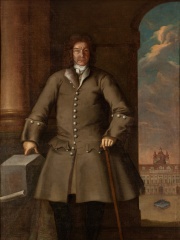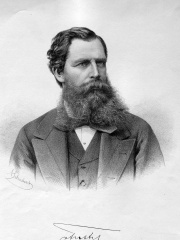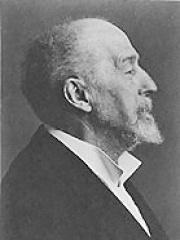
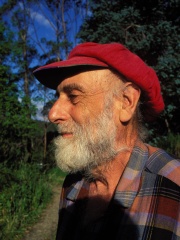
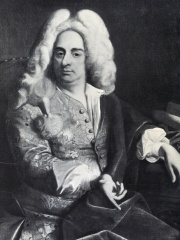
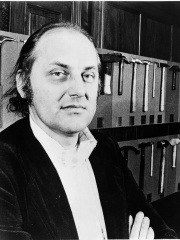

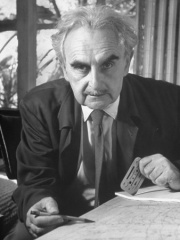
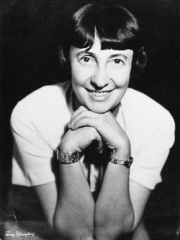
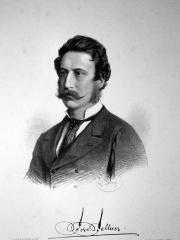
The Most Famous
ARCHITECTS from Austria
This page contains a list of the greatest Austrian Architects. The pantheon dataset contains 518 Architects, 18 of which were born in Austria. This makes Austria the birth place of the 7th most number of Architects behind United States, and Spain.
Top 10
The following people are considered by Pantheon to be the top 10 most legendary Austrian Architects of all time. This list of famous Austrian Architects is sorted by HPI (Historical Popularity Index), a metric that aggregates information on a biography's online popularity. Visit the rankings page to view the entire list of Austrian Architects.

1. Otto Wagner (1841 - 1918)
With an HPI of 74.75, Otto Wagner is the most famous Austrian Architect. His biography has been translated into 51 different languages on wikipedia.
Otto Koloman Wagner (German: [ˈɔto ˈkoːloman ˈvaːɡnɐ] ; 13 July 1841 – 11 April 1918) was an Austrian architect, furniture designer and urban planner. He was a leading member of the Vienna Secession movement of architecture, founded in 1897, and the broader Art Nouveau movement. Many of his works are found in his native city of Vienna, and illustrate the rapid evolution of architecture during the period. His early works were inspired by classical architecture. By mid-1890s, he had already designed several buildings in what became known as the Vienna Secession style. Beginning in 1898, with his designs of Vienna Metro stations, his style became floral and Art Nouveau, with decoration by Koloman Moser. His later works, 1906 until his death in 1918, had geometric forms and minimal ornament, more clearly expressing their modern structure and materials. Although they are considered predecessors to modern architecture they remain within the larger classical tradition of the Schinkel School in Germany and Central Europe.

2. Friedensreich Hundertwasser (1928 - 2000)
With an HPI of 71.91, Friedensreich Hundertwasser is the 2nd most famous Austrian Architect. His biography has been translated into 48 different languages.
Friedrich Stowasser (15 December 1928 – 19 February 2000), better known by his pseudonym Friedensreich Regentag Dunkelbunt Hundertwasser (Austrian German: [ˈfriːdn̩sraɪç ˈreːɡn̩taːɡ ˈdʊŋkl̩bʊnt ˈhʊndɐtˌvasɐ]), was an Austrian visual artist and architect who also worked in the field of environmental protection. He emigrated to the Far North of New Zealand in the 1970s, where he lived and worked for most of the rest of his life. Hundertwasser stood out as an opponent of "a straight line" and any standardisation, expressing this concept in the field of building design. His best known work is the Hundertwasserhaus in Vienna, which has become a notable place of interest in the Austrian capital, characterised by imaginative vitality and uniqueness.

3. Johann Bernhard Fischer von Erlach (1656 - 1723)
With an HPI of 70.27, Johann Bernhard Fischer von Erlach is the 3rd most famous Austrian Architect. His biography has been translated into 36 different languages.
Johann Bernhard Fischer von Erlach (20 July 1656 – 5 April 1723) was an Austrian architect, sculptor, engraver, and architectural historian whose Baroque architecture profoundly influenced and shaped the tastes of the Habsburg Empire. His influential book A Plan of Civil and Historical Architecture (1721) was one of the first and most popular comparative studies of world architecture. His major works include Schönbrunn Palace, Karlskirche, and the Austrian National Library in Vienna, and Schloss Klessheim, Holy Trinity Church, and the Kollegienkirche in Salzburg.

4. Hans Hollein (1934 - 2014)
With an HPI of 67.57, Hans Hollein is the 4th most famous Austrian Architect. His biography has been translated into 37 different languages.
Hans Hollein (30 March 1934 – 24 April 2014) was an Austrian architect and designer and key figure of postmodern architecture. Some of his most notable works are the Haas House and the Albertina extension in the inner city of Vienna.
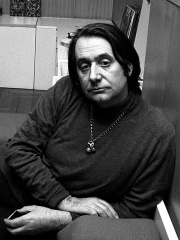
5. Ettore Sottsass (1917 - 2007)
With an HPI of 65.12, Ettore Sottsass is the 5th most famous Austrian Architect. His biography has been translated into 24 different languages.
Ettore Sottsass (Italian pronunciation: [ˈɛttore sotˈsas]; 14 September 1917 – 31 December 2007) was an Italian architect and product designer. He was known for his designs of furniture, jewelry, glass, lighting, homeware and office supplies. He also worked on numerous buildings and interiors, often defined by bold colours.

6. Camillo Sitte (1843 - 1903)
With an HPI of 65.00, Camillo Sitte is the 6th most famous Austrian Architect. His biography has been translated into 22 different languages.
Camillo Sitte (17 April 1843 – 16 November 1903) was an Austrian architect, painter and urban theorist whose work influenced urban planning and land use regulation. Today, Sitte is best remembered for his 1889 book, City Planning According to Artistic Principles, in which he examined and documented the traditional, incremental approach to urbanism in Europe, with a close focus on public spaces in Italy and the Germanic countries.

7. Richard Neutra (1892 - 1970)
With an HPI of 63.82, Richard Neutra is the 7th most famous Austrian Architect. His biography has been translated into 43 different languages.
Richard Joseph Neutra ( NOI-tra; 8 April 1892 – 16 April 1970) was an Austrian-American architect. Living and building for most of his career in Southern California, he came to be considered a prominent and important modernist architect. His most notable works include the Kaufmann Desert House, in Palm Springs, California.

8. Margarete Schütte-Lihotzky (1897 - 2000)
With an HPI of 63.28, Margarete Schütte-Lihotzky is the 8th most famous Austrian Architect. Her biography has been translated into 27 different languages.
Margarete "Grete" Schütte-Lihotzky (née Lihotzky; 23 January 1897 – 18 January 2000) was an Austrian architect and a communist activist in the Austrian resistance to Nazism. She is mostly remembered today for designing what is known as the Frankfurt kitchen.

9. Ferdinand Fellner (1847 - 1916)
With an HPI of 62.54, Ferdinand Fellner is the 9th most famous Austrian Architect. His biography has been translated into 19 different languages.
Ferdinand Fellner (19 April 1847 – 22 March 1916) was an Austrian architect.
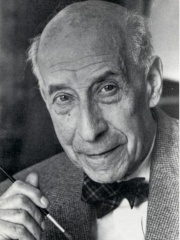
10. Josef Frank (1885 - 1967)
With an HPI of 61.07, Josef Frank is the 10th most famous Austrian Architect. His biography has been translated into 19 different languages.
Josef Frank (Austrian German: [fraŋk]; 15 July 1885 – 8 January 1967) was an Austrian and later Swedish, architect, artist, and designer. Together with Oskar Strnad, he created the Vienna School of Architecture, and its concept of Modern houses, housing and interiors. After leaving Austria due to rising antisemitism, Josef Frank started working at Swedish interior design store Svenskt Tenn in 1934, where he became a key figure in shaping the company's design identity. He is today considered one of the most important Swedish designers.
People
Pantheon has 18 people classified as Austrian architects born between 1656 and 1936. Of these 18, none of them are still alive today. The most famous deceased Austrian architects include Otto Wagner, Friedensreich Hundertwasser, and Johann Bernhard Fischer von Erlach.
Deceased Austrian Architects
Go to all RankingsOtto Wagner
1841 - 1918
HPI: 74.75
Friedensreich Hundertwasser
1928 - 2000
HPI: 71.91
Johann Bernhard Fischer von Erlach
1656 - 1723
HPI: 70.27
Hans Hollein
1934 - 2014
HPI: 67.57
Ettore Sottsass
1917 - 2007
HPI: 65.12
Camillo Sitte
1843 - 1903
HPI: 65.00
Richard Neutra
1892 - 1970
HPI: 63.82
Margarete Schütte-Lihotzky
1897 - 2000
HPI: 63.28
Ferdinand Fellner
1847 - 1916
HPI: 62.54
Josef Frank
1885 - 1967
HPI: 61.07
Jakob Prandtauer
1660 - 1726
HPI: 59.91
Heinrich von Ferstel
1828 - 1883
HPI: 59.85
Overlapping Lives
Which Architects were alive at the same time? This visualization shows the lifespans of the 14 most globally memorable Architects since 1700.

